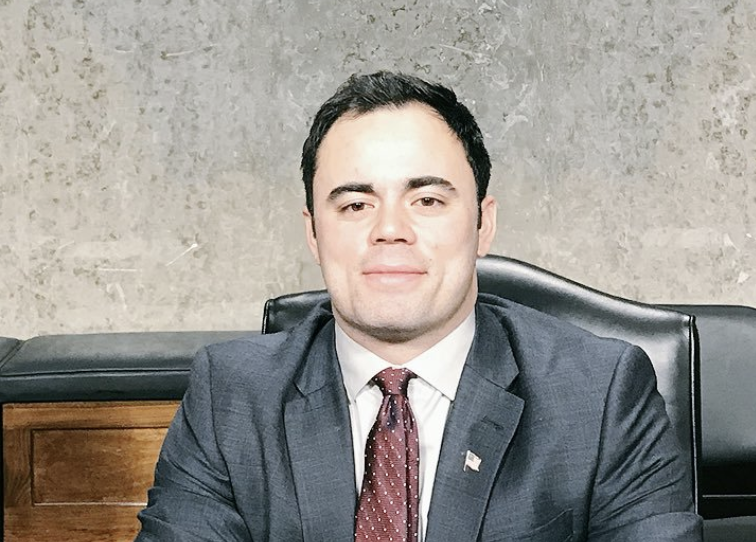Posse Vet Snashall ’21 Proposes Higher Education Policy


Gabriel Snashall ’21 is a Posse veteran studying government and the author of a policy proposal that aims to introduce consumer transparency to the college application process. Similar to a dealership’s sheet on a car window that lists mileage and crash test ratings, Snashall designed a simple form that breaks down the important data on an institution that incoming students should know but often don’t, such as accreditation status and post-grad job placement rates. The proposal earned Snashall a fellowship with the Veterans of Foreign Wars and the Student Veterans of America joint legislative group, which later garnered him support from Connecticut Congresswoman Elizabeth Esty.
Snashall discovered the need for better policy after leaving the navy and going back to school in 2016. The year before coming to Wesleyan, he enrolled in two schools in his hometown of Fresno, California: a local community college and the University of Phoenix (a for-profit college). Thanks to military benefits, schools can pay student veterans a basic allowance for housing (BAH). The average BAH rate in Fresno was $1,200 a month, but University of Phoenix offered him $3,500. Snashall attended class one evening a week, and in return was able to pay off his mom’s mortgage. “I didn’t really put much effort into University of Phoenix because it was just like a source of income,” said Snashall “but I got to see some things that I was just shocked at. The education they were providing.”
It is not new information that many for-profit colleges take advantage of veteran benefits and offer low-quality education in return. Every year, politicians try to pass legislation that will curb for-profit colleges. The problem, according to Snashall, is that while these bills preach against for-profit schools, simultaneously “there’s a narrative in America that is just about getting a college degree, and it doesn’t take into account the quality of that education.”
Snashall realized the depth of the problem when he came across a U.S. government report that used tax data to evaluate how alums of select for-profit colleges faired professionally and financially before and after graduation. It found, on average, they got lower-paying jobs and had more debt. Although most information is made public in the form of government data or reports published by institutions themselves, it is often opaque and hard to find. Especially if you are a returning veteran or a seventeen-year-old navigating the college application process on your own. “We’re in an age where open and free data is so accessible, it just takes applying policy to make it transparent.”
So Snashall wrote the policy he wanted to see. His goal was “to make the data accessible for the young student, the nontraditional student, in a way that they could see the important stuff first [for example, whether the institution is under investigation for fraud], and see their chances of success after that [average salaries after graduation, program completion rates, all compared to the national average].”
It is not Snashall’s mission to ban for-profit colleges. A more informed student body will hopefully weed out the bad actors and pressure the good ones to maintain their accessible nature, “Because there are some good ones that accommodate the nontraditional student in ways that public schools and not-for-profits can’t.”
In Snashall’s opinion, the worst case scenario is that the policy gets dropped before it goes to Congress as a proposed bill. Congresswoman Esty is not seeking re-election, and her office has not responded to calls about the status of this policy that she voiced support for two months ago. “The best-case scenario,” says Snashall, “is that the bad ones fall off, and you have a more transparent system. Not only that, you have students who really truly understand what they’re getting themselves into.”

